Inside Pettagam, India’s First Private Museum On Chettinad Jewellery Now Opened In Karaikudi
Almost 2,500 km away from Delhi in Karaikudi, Tamil Nadu, the strong vaults of Chettinad jewellery are unlocked with the opening of Pettagam by luxury jewellery designer Meenu Subbiah. Outlook Luxe takes you on a tour of the museum that lies at the intersection of Nattukkotti Nagarathar’s history, their worldly travels, trade, rituals, and a taste for finer things in life
In the Chettinad region of Tamil Nadu, home to the centuries-old community of Chettiars, every house is said to have a pettagam. It is not just a traditional chest, but a strong iron-made chamber where families keep their valuables like jewels, land documents, promissory notes, heirlooms, and more. Some of these pettagams used to be so complex, having over 16-18 locks and a guiding map to reach the treasure trove, that till date many families are not able to open it!
Intrigued by the story of pettagam, we travelled all the way from Delhi to the heart of Chettinad in Karaikudi. The sleepy city, which is home of Chettiars, unfolded like a lucid dream coming true. Colourful Chettiar mansions stood as remnants of the past on meandering roads surrounded by idyllic lotus ponds. Magenta and white bougainvillea crept onto the walls and crevices of the mansions as if holding onto the legacy of Chettiars — a fierce business-merchant class who traded with the world and built these heritage houses from the mid-19th to the 20th century. They stand as an insignia of their affluence and influence in the region.
Inside Pettagam
Our car stopped on SRM street in front of one such edifice. Designed as a Chettinad mansion, washed in pale hues of yellow that shone bright under the sun-kissed morning and featuring wood-carved windows, we stepped inside the mansion and were floored by its pettagam-looking entrance! Painted like a bright red vault sectioned into 18 drawers with metal pulls, it felt like entering a chamber guarding Chettinad’s trove of tales. We were at India’s first private museum of Chettinad jewellery, Pettagam.
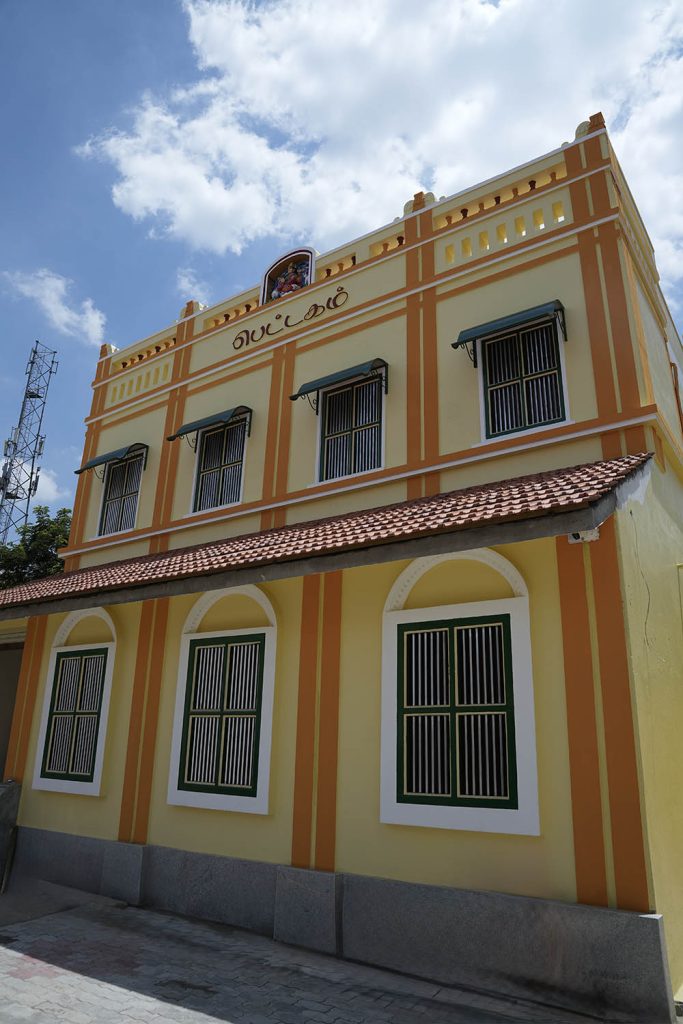
It is envisioned by luxury jewellery designer Meenu Subbiah, one of South India’s first few Graduate Diamonds from Gemological Institute of America (GIA-USA), who helms her eponymous brand, started in 1993 with her father, SM Subbiah, specialising in diamond jewellery. Subbiah, a Nagarathar Chettiar, had an earnest desire since her early years to document the glittering yet lesser-known legacy of the Chettiad jewellery. “A lot has been documented on Chettiar mansions, art, textiles, and cuisine. But jewellery has not been well documented,” Subbaiah tells Outlook Luxe, beginning the walk-through of Pettagam.
Subbiah has been studying traditional Chettinad jewellery for the last 30 years. It means talking to elders in the community, looking for references in literature, in music, and sifting through hundreds of sepia-toned photographs of gorgeously dressed Aachis (Chettiar women) wearing sparkling diamonds.
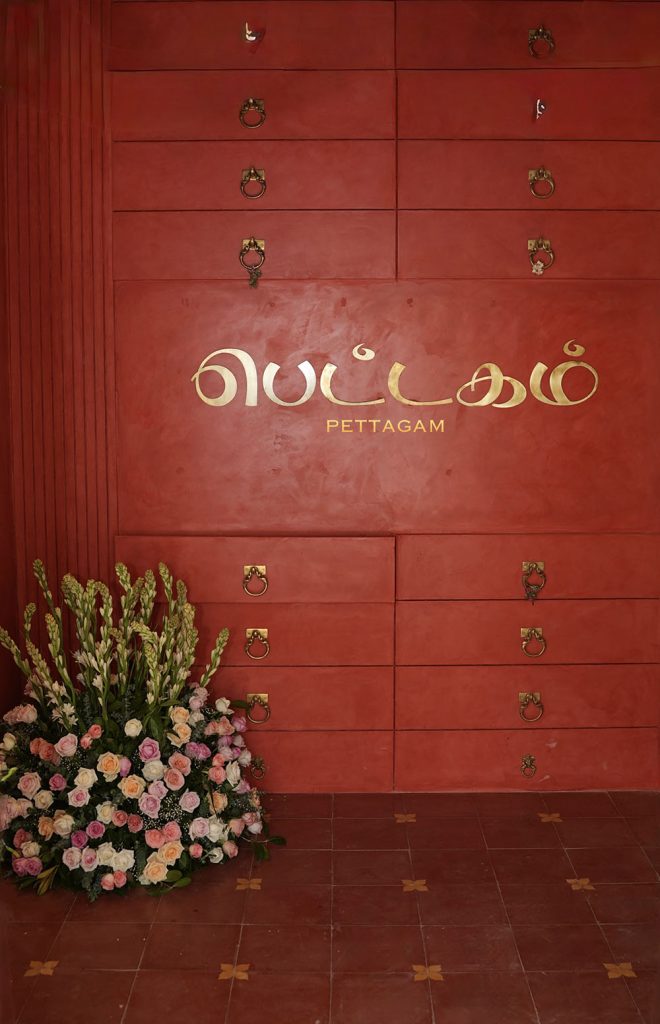
Further, she went an extra mile to find members from the Chettiar community in Malaysia, Singapore, and Sri Lanka for deeper insights on Chettinad jewellery. “I thought of presenting the mammoth research in a book. But the idea of a jewellery museum was more fascinating and engaging for visitors, and thus Pettagam was born,” she tells us.
Who are Nattukkotti Chettiars?
Stepping inside Pettagam was a journey back into time. We traced the origins of Chettinad jewellery through its makers — the Nattukkottai Nagarathars from Tamil Nadu. They were fearless traders and sea-farers who crossed oceans and brought the world to Chettinad, even finding mentions in the Tamil epic of Silappadhikaram. A map at the museum spotlighted their worldly travels to Southeast Asian countries, such as Burma, Cambodia, Vietnam, Malaysia, Sri Lanka, as well as Europe with whom they traded in precious stones like corals, emeralds, rubies, sapphires, pearls and diamonds, besides textiles, tea, rice, coconuts, rubber, and salt from 1800-1965.
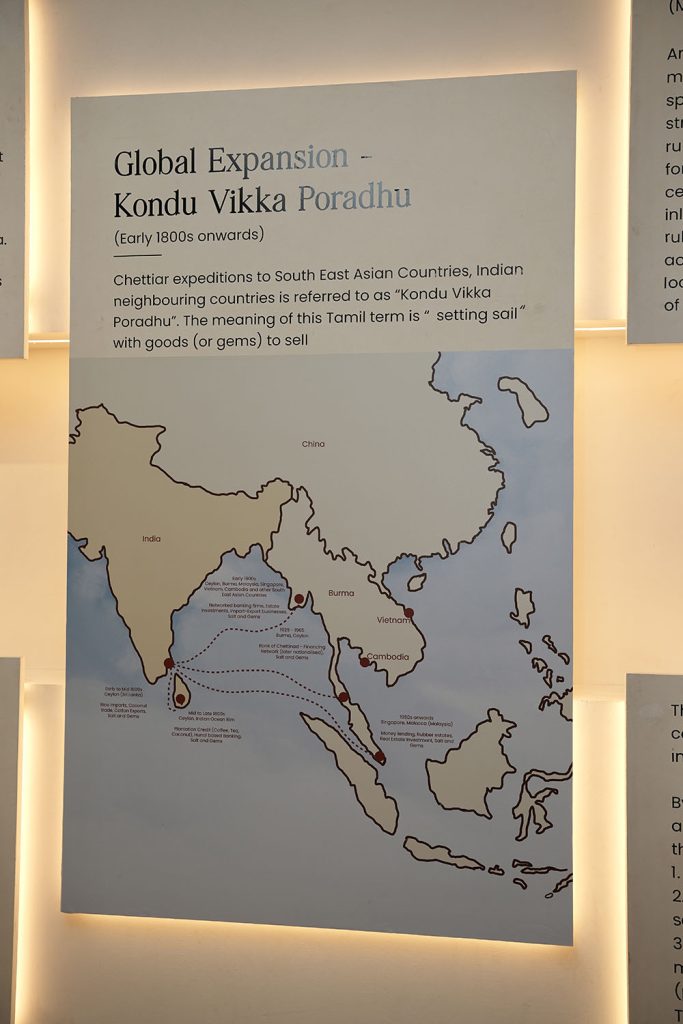
“Nagarathar, with their adaptiveness to many places and an eye for finer things, spotted what was unique to a certain place. They had a way of getting it back to Chettinad and integrating it into its architecture, jewellery, cuisine, and art. From teak wood from Burma used in intricately carved doorways and pillars in Chettinad mansions, floorings from Italy, cutlery from Yugoslavia, light-refracting colourful Belgian glasses used in windows, to toys from Japan, they truly showed that they were art connoisseurs,” Subbiah tells us at the museum.
Key motifs in Chettinad jewellery
The ground floor of Pettagam, layered with the handcrafted Athangudi tiles, had a display of nine key motifs, often seen in Chettinad jewellery. From Sangu (conch), Mayil (peacock), Athangudi tiles, Lace, Bow, Annapakshi (swan), Nandu (crab), Goddess Lakshmi, Gopuram (temple tower), each one indicates Chettinad jewellery’s intersection with faith, rituals, sea-faring routes, European influences, mythical lore, and temple architecture.
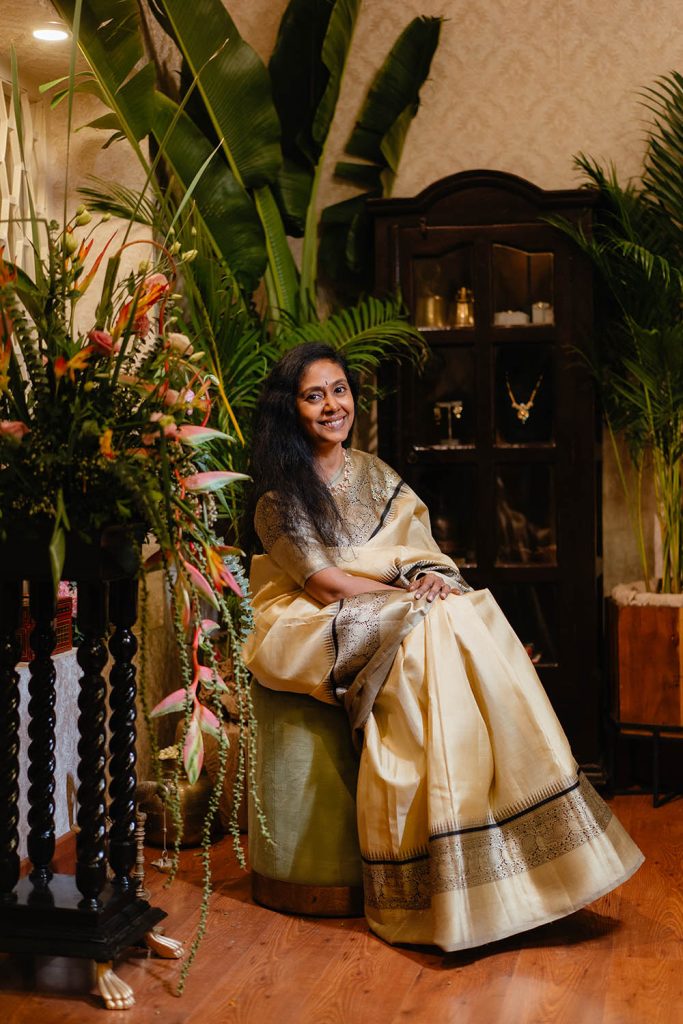
Subbiah has incorporated these motifs in her three jewellery lines – Vilasam (Chettinad jewellery), Vamsam (Indian heritage), and Menaya (contemporary design) displayed at Pettagam. Telling us about European influences in the jewellery, she says, “Nagarathar’s influence across the oceans was so widespread that they were specially invited to Queen Victoria‘s coronation during the 1850s. They borrowed motifs such as bows, brooches, and the Art Deco style of jewellery.” We found its reflection in the Regal Harmony Padhakkam featuring a European bow motif running throughout the long chain neckpiece, leading to an ornate pendant.
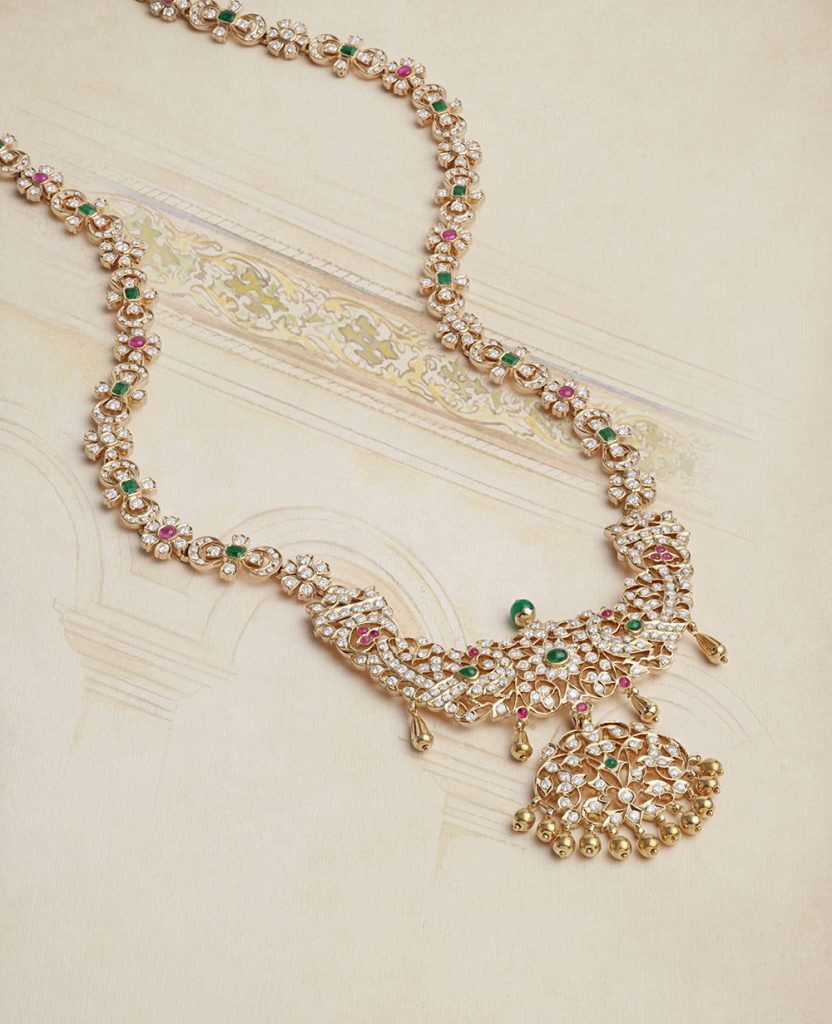
However, it was the Conch and the Crab motifs that were the most important, borrowed from Nagarathar’s sea-braving journeys in their catamarans. “The seafarers used to follow the tortoise route, but Nagarathars followed the crab route as it was faster. They incorporated the crab and gopuram motif in one of the most important pieces of wedding jewellery, the Thirumangalyam (marriage necklace),” says Subbiah, showing us the heavyweight gold necklace, featuring tabular form with sharp spikes worn exclusively by Nattukkottai Chettiar women on their wedding and special occasions like ‘Sashtiabdhapoorthi‘, the sixtieth birthday celebrations of their husbands. Another stand-out piece was the Mayil Maguri necklace from Vilasam line showing a fully open dancing peacock pendant crafted with diamonds, rubies, emeralds, and a string of pearls accented with sapphires.
Heritage meets re-invention
We reached the first floor of Pettagam, where heritage melded with modern innovation. Subbiah’s family jewels were displayed alongside re-imagined heritage jewellery from India. From the classic Poocharams, Kandacharams, and Mullaicharams from Chettinad to the rich Kasu Mala of Kerala, the intricate Jali work-inspired pieces from the Mughal era, Kundan necklaces from Rajasthan to the temple Jewellery (Arakku) of Chola and Pandya Kings, it was culture served through the prism of old and contemporary designs.
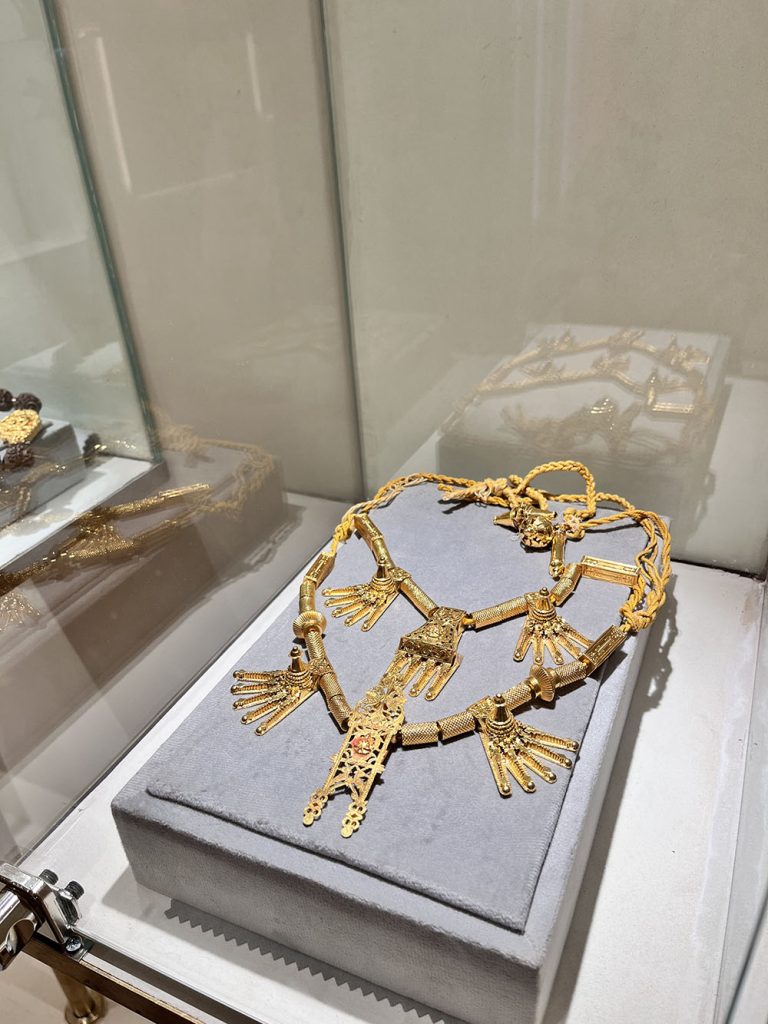
“During research, I was inspired by the jewellery sculpted in stone in the Virupaksha Temple in Hampi, understood how the Nizams have used pearls to embellish their jewellery, and how the Jadau artisans of Rajasthan merge intricate work and opulence to create pieces,” says Subbiah. The first floor will soon have rotational displays of Chettinad jewellery sourced from different families of the region, for the visitors to explore.
Uniqueness of Chettinad jewellery
Chettinad jewellery is unique due to the distinct close setting technique. “Close setting is where jewellery is crafted from one single sheet of metal and diamonds are securely encased in the design to create a monolithic look. It is tough, painstaking, timeless, and a dying art used in less than 10% of traditional jewellery worldwide,” tells Subbiah, who is preserving this craft with her Aasaris(craftspeople) having their ancestral roots in the Chola and Pandya kingdoms. They carry forward techniques that have been mastered and passed down through centuries.
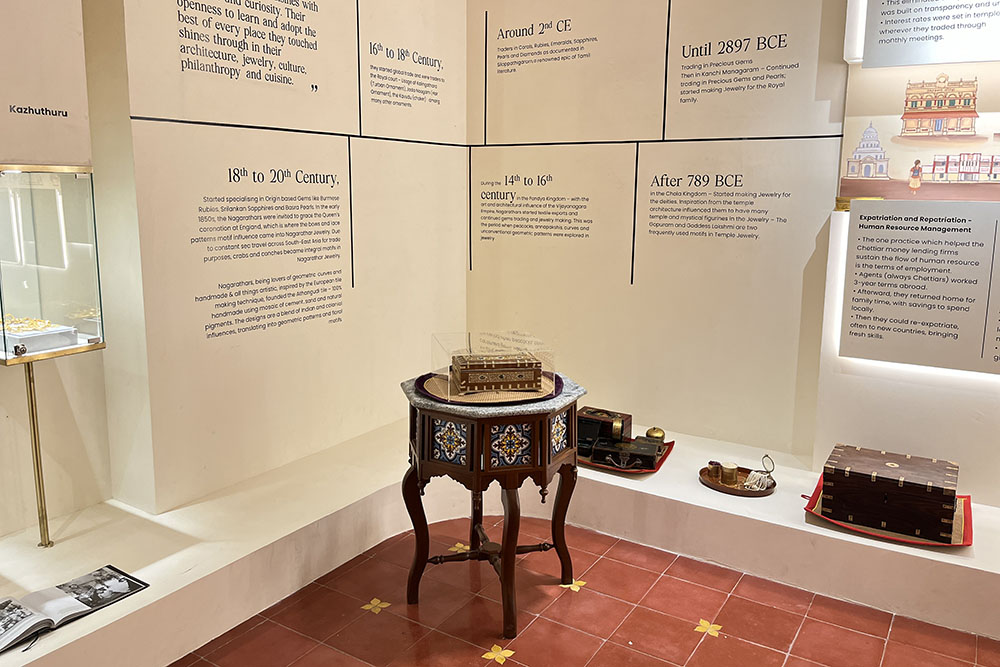
As our tour ended, it felt as though we had unlocked a Pettagam not confined to a Chettiar household, but one that belongs to every visitor eager to look at Chettinad jewellery through the lens of art, design, architecture, travel, history, and most importantly, a Chettiar like Meenu Subbiah’s vision to document her glorious community.